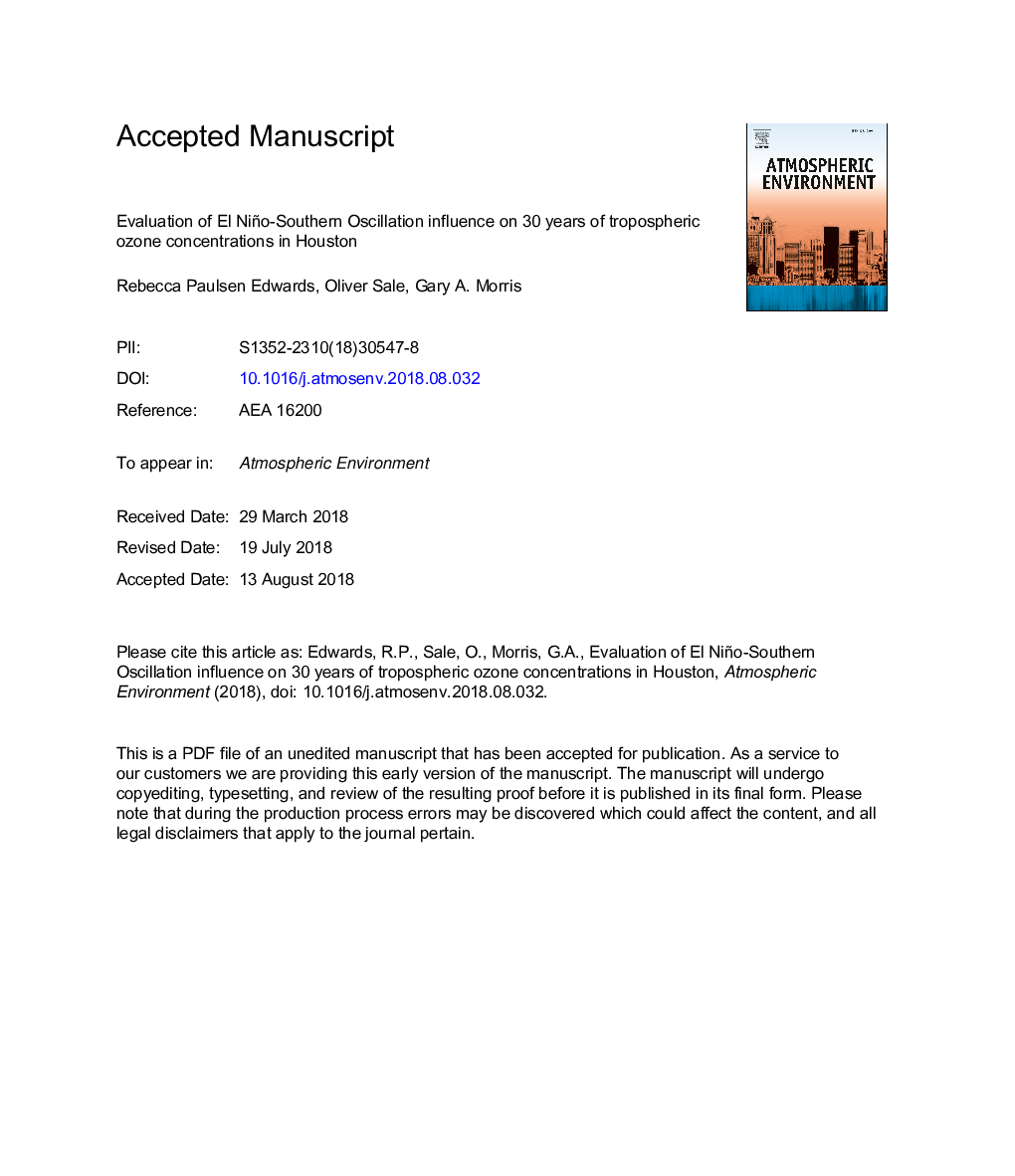| Article ID | Journal | Published Year | Pages | File Type |
|---|---|---|---|---|
| 10138590 | Atmospheric Environment | 2018 | 31 Pages |
Abstract
Surface observations collected over the period 1980-2010â¯at three Continuous Ambient Monitoring Stations located in Houston, Texas were leveraged to create a long-term composite dataset of tropospheric ozone measurements. This dataset was used to evaluate large-scale influences and their relationship to exceedances of the 70â¯ppbv National Ambient Air Quality Standard for ozone. A linear regression fit to monthly mean daily peak 8-h concentrations for each month revealed a decreasing trend for the duration of the study period. After removal of this temporal trend, 8-h peak values averaged for each month featured peaks in springtime and late-summer with relative minima in mid-summer and winter. Stratification of the database by El Niño-Southern Oscillation phase using the Oceanic Niño Index revealed a statistically significant (αâ¯=â¯0.05) dependence of peak 8-h concentration on ENSO phase, with an enhancement of 5.8, 4.8, and 7.0 for March, April, and June during warm phase years, while cool phase years had statistically significant enhancements of 5.0, 4.0, and 3.6â¯ppbv in February, October, and December relative to neutral conditions. Importantly, relative to neutral conditions, “El Nino years” produce 26% more exceedences while “La Nina years” produce 23% fewer. The earlier onset of ozone seasons both in spring and late summer during El Nino years leads to more exposure to direct sunlight and more seasonal photochemical production, while the delayed late summer season during La Nina years leads to decreased sunlight and suppressed seasonal photochemical production relative to neutral years. Evaluation of the number of exceedances per month for each ENSO regime also suggests high tropospheric ozone concentrations in the fall and spring, with 4.4 and 6.8 exceedances per month in June and September, respectively for the warm phase. During cool phase conditions, Houston averaged 5.0 exceedances per month in September. Exceedances for neutral conditions ranged from zero exceedances in December to 2.2 exceedances in May and 5.0 in September. Analysis of exceedance data and mean values in light of parameters of the underlying distribution of daily peak 8-h data suggests that ENSO may influence the shape of those distributions, influencing both background ozone concentrations and the number of exceedances. Fast Fourier analysis indicated a common spectral signature for the ENSO and ozone spectra. This finding has implications for air quality mitigation strategies employed during warm phase and cool phase years.
Keywords
Related Topics
Physical Sciences and Engineering
Earth and Planetary Sciences
Atmospheric Science
Authors
Rebecca Paulsen Edwards, Oliver Sale, Gary A. Morris,
